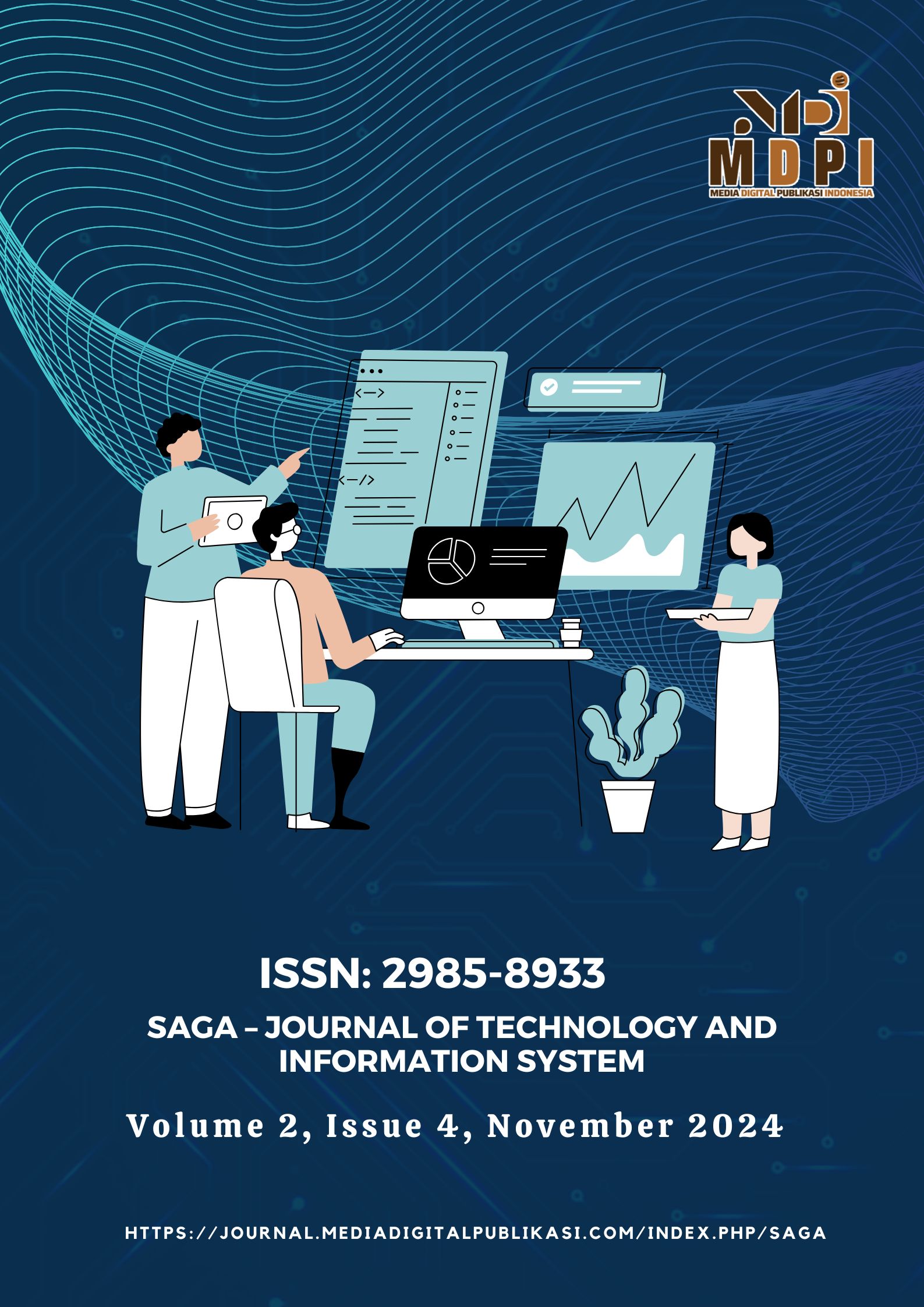Bridging TAM and e-Puskesmas: Measuring Perceived Ease of Use in Digital Health
DOI:
https://doi.org/10.58905/saga.v2i4.415Keywords:
e-Puskesmas, Technology Acceptance Model (TAM), Sociodemography, Puskesmas, Puskesmas OfficersAbstract
e-Puskesmas is an information system based on data and communication innovation in giving wellbeing administrations which is essential for the benefit of both patients and health care providers. However, the use of e-Puskesmas is still a challenge because some Puskesmas officers have difficulty in using e-Puskesmas. E-Puskesmas was introduced in 2016 and began to be used in Bekasi City Puskesmas in 2019. This study aimed to determine the intensity of e-Puskesmas use as reviewed from sociodemographic and user perception perspectives using the Technology Acceptance Model (TAM) concept. This study was a quantitative research with a cross-sectional design. The sampling method used was multistage random sampling, with a sample consisting of 214 health center officers from five health centers. The research instrument used was a Google Forms questionnaire. The data obtained were statistically tested using the chi-square test. The results showed that sociodemographic factors had a significant relationship with the intensity of e-Puskesmas use. In addition, there was a significant relationship between the perceived usefulness variable (0.018), perceived ease of use (0.014), and intensity of e-Puskesmas use.
References
Al-Gahtani, S. (2001). The applicability of TAM outside North America: An empirical test in the United Kingdom. Information Resources Management Journal (IRMJ), 14, 37-46.
Anjani, S., Rachmani, E., Wulandari, F., & Agiwahyuanto, F. (2022). Gender, Age and Education with Internet Use Behavior among Health Workers in Semarang City Health Center. Visikes: Journal of Health, 20(2), 518-531.
APJII. (2020). Survey of Internet User Data in Indonesia 2018. Jakarta.
Boini, U. (2022). Analysis of the Implementation of e-Puskesmas Services at the Community Health Center in Indra Jaya District, Pidie Regency. Administration and Social Science, 1, 12-18.
Destiana, B. (2012). Analysis of End-User Acceptance of e-Learning System Implementation Using the Technology Acceptance Model (TAM) Approach at SMAN 1 Wonosari. State University of Yogyakarta.
Dewi, B. R., Rahajo, S., & Adhitya, E. (2020). Design of Web-Based Health Center Information System. IKRA-ITH Informatics, 1, 12-19.
Handayani, T., & Feoh, G. (2016). Design of a Web-Based Medical Record Information System (Case Study at Sriati Maternity Clinic, Sungan Penuh City-Jambi). Journal of Information and Computer Technology, 2, 226-236. https://doi.org/https://doi.org/10.36002/jutik.v2i2.148
Jogiyanto, H. M. (2007). Information Technology System Success Model. Andi Offset.
Ludianto. (2020). Effectiveness of e-Puskesmas Services at the Bungaraya District Community Health Center, Siak Regency. Riau Islamic University.
Magdalena, S., Yulia, N., Sonia, D., & Fannya, P. (2024). Review of E-Puskesmas Implementation at Puskesmas Babelan I Bekasi Regency. Indonesian of Health Information Management Journal (INOHIM), 11(2), 79-89. https://doi.org/10.47007/inohim.v11i2.524
Mardiyoko, I., Rohman, H., Aulia, A., & Bhakti Setya Indonesia Health, P. (2020). Evaluation of the Use of the Puskesmas Management Information System Using the Technology Acceptance Model Method at Puskesmas Semin I. Journal of Community Empowerment), 1(3), 40-45. https://doi.org/10.55314/jcoment.v1i3.274
Minister of Health of the Republic of Indonesia. Regulation of the Minister of Health of the Republic of Indonesia Number 75 of 2014 concerning Community Health Centers. Jakarta: Indonesian Ministry of Health: 2014.
Fitriani, H. (2023). Analysis of the Implementation of e-Puskesmas Services at the Community Health Center in Air Kumbang District, Banyuasin Regency. Journal of Public Administration, Business and Rural Development Planning, 5, 46-62. https://doi.org/https://doi.org/10.69741/jpublic.v5i2.155
Roziqin, M. C., Rachmatta, D., Mudiono, P., & Amalia, N. (2021). . Journal of Information Technology and Computer Science (JTIIK), 8(1), 47-54. https://doi.org/10.25126/jtiik.202182907
Satriadi, & Haryani, D. S. (2019). Implementation of e-Puskesmas at Tanjungpinang Health Center. Journal of Economic and Business Research, 4(2), 153-165.
Susanto, E. B., Christianto, P. A., & Kurniawan, M. F. (2016). Mobile-based Health Service Information System that Integrates Health Service Agencies in Pekalongan City. Journal of Research and Development of Pekalongan City, 11, 57-69.
Venkatesh, V., & Davis, F. D. (2000). A Theoretical Extension of the Technology Acceptance Model: Four Longitudinal Field Studies. Management Science, 46(2), 186-204.
Wang, C., & Qi, H. (2021). Influencing factors of acceptance and use behavior of mobile health application users: A systematic review. Healthcare (Switzerland), 9(3). https://doi.org/10.3390/healthcare9030357
Wibowo, A. (2008). A Study of Information System User Behavior with the Technology Acceptance Model (TAM) Approach.
Yudi Alvian, V., & Ketut Tangking Widarsa, I. (2019). Acceptance Analysis of e-Puskesmas Information Systems in Badung Regency Based on the Technology Acceptance Model. Arc. Com. Health - December, 6, 30-39.
Downloads
Published
Issue
Section
License
Copyright (c) 2025 Ratri Ciptaningtyas; Elia Hamda Humairo, Riastuti Kusumawardani, Fajar Ariyanti, Catur Rosidati

This work is licensed under a Creative Commons Attribution-ShareAlike 4.0 International License.












